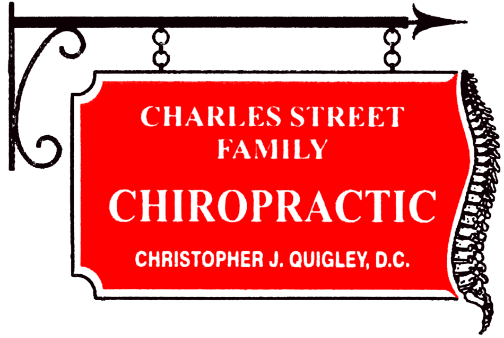
Ever tried to check your blind spot just as someone taps your bumper?
That tiny twist of the head seems harmless—until your neck writes a strongly worded letter to the rest of your body. In 2006, biomechanical maestro Manohar Panjabi PhD and colleagues put this oh-no scenario under a scientific microscope and came back with a spicy finding: when your head is turned during a rear impact, your neck’s injuries don’t just get worse—they get weirder, spreading across multiple motion planes like a bad dance move. 1
Multiplanar mayhem: what does that even mean?
“Multiplanar” is jargon for injuries happening across more than one axis—think extension (head tipping back), axial rotation (twist), and lateral bending (ear toward shoulder). In Panjabi’s simulated impacts on cadaveric cervical spines, head-turned rear impacts produced 3-plane injuries at key neck levels once the acceleration got high enough. Translation: the neck wasn’t just bending back; it was also twisting and side-bending in damaging combos—a mechanical triple threat. At about 8 g, C5-C6 showed three-plane instability, while C7-T1 picked up two-plane injuries. Even lower bumps (around 5 g) could cross injury thresholds at several segments. Hello, chaos.
The neck’s hot spots (and why they matter)
Panjabi’s team flagged the uppermost joint (C0-C1, where skull meets spine) and the middle-lower neck (especially C5-C6) as particularly vulnerable when the head is rotated. That’s a big deal: C0-C1 is crucial for nodding and proprioception, while C5-C6 is the commuter highway of your cervical spine—lots of motion, lots of stress. The study found significantly greater injury at C0-C1 and C5-C6 with head-turned rear impacts than with head-forward rear or even frontal impacts. So yes, simply looking over your shoulder can turn a fender-bender into a multi-axis neck saga.
Why turning your head increases the risk
When you rotate your head, the ligaments and capsules around each vertebra aren’t at a neutral, slack-friendly length. They’re pre-loaded—like a rubber band already stretched—so when the rear impact hits, you’re starting closer to the end of your safe range. Other 2006 work from the same research circle linked these multiplanar injuries to dynamic extension beyond physiologic limits during head-turned impacts—basically, too much backward motion layered on top of twist—an ugly combo for stability.
Want more spice? A companion 2006 upper-cervical study found that the alar, transverse, and apical ligaments (the VIPs of skull-on-spine stability) weren’t at high risk up to 8 g—suggesting that the pain party often kicks off a bit lower in the neck or needs nastier conditions up top. It’s nuanced: not every structure fails at once, and not every crash is created equal.
Safety takeaways (wrapped in real-life advice)
-
Head restraints matter. Properly adjusted head restraints reduce how far the head can whip back and sideways. Aim to have the top of the restraint near the top of your head and close to the back of it. (No, it’s not a coat rack.)
-
Neutral beats twisted. If you sense a possible rear hit—horns blaring, screeching brakes—bring your head back toward straight ahead. Panjabi’s data make it clear: rotation at impact = more complex injury patterns.
-
Don’t shrug off “minor” bumps. Even 5 g of pulses crossed injury thresholds in the lab. Symptoms after a low-speed hit aren’t imaginary; the neck’s mechanics can go sideways (and backward, and rotational) fast.
Why this paper still slaps (your assumptions)
Panjabi’s 2006 study helped shift the whiplash conversation from “It’s just a simple hyperextension” to “It’s a 3D puzzle.” By demonstrating that head posture at impact reshapes the injury map—lighting up C0-C1 and C5-C6, and recruiting multiple planes—it gave clinicians, engineers, and safety designers a more precise villain to target. It also explains why two people in similar crashes can have wildly different symptoms: posture is a plot twist.
The fun, nerdy bottom line
Think of your neck as a beautifully tuned, many-jointed tripod. If it’s centered, it handles surprises better. Turn it, and one leg is already loaded; now add a shove from behind, and the whole structure can wobble across three planes. That’s the “multiplanar” mischief Panjabi captured—and why your best defense in traffic is good posture, smart head-restraint setup, and a healthy respect for physics.
So yes, checking your blind spot is non-negotiable. But if fate lines up a rear-end tap at the same moment, your neck would very much prefer you to be… a little less curious. Call our Boston Chiropractic office at 617-720-1992 to get an appointment to see if we can help you with a whiplash injury. Dr. Quigley is a specialist in these injuries. It is our 35th year of being one of the top car crash Chiropractors in Boston.
1. Panjabi, Manohar M., et al. “Multiplanar Cervical Spine Injury due to Head-Turned Rear Impact.” Spine, vol. 31, no. 4, Feb. 2006, pp. 420-29
